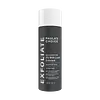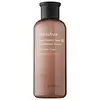Paula's Choice Skin Perfecting 2% BHA Liquid Exfoliant Versus innisfree Volcanic Clusters Pore Clearing Toner
What's inside
What's inside
 Key Ingredients
Key Ingredients

 Benefits
Benefits

 Concerns
Concerns

 Ingredients Side-by-side
Ingredients Side-by-side

Water
Skin ConditioningPropanediol
SolventAlcohol
Antimicrobial1,2-Hexanediol
Skin ConditioningSilica
AbrasivePPG-13-Decyltetradeceth-24
EmulsifyingLithium Magnesium Sodium Silicate
AbsorbentSodium Citrate
BufferingCitric Acid
BufferingGlyceryl Caprylate
EmollientParfum
MaskingCalcium Chloride
AstringentEthylhexylglycerin
Skin ConditioningDisodium EDTA
Colloidal Sulfur
AntimicrobialVolcanic Ash
AbrasiveCI 77891
Cosmetic ColorantLactic Acid/Glycolic Acid Copolymer
Skin ConditioningAluminum Hydroxide
EmollientTriethoxycaprylylsilane
Tocopherol
AntioxidantWater, Propanediol, Alcohol, 1,2-Hexanediol, Silica, PPG-13-Decyltetradeceth-24, Lithium Magnesium Sodium Silicate, Sodium Citrate, Citric Acid, Glyceryl Caprylate, Parfum, Calcium Chloride, Ethylhexylglycerin, Disodium EDTA, Colloidal Sulfur, Volcanic Ash, CI 77891, Lactic Acid/Glycolic Acid Copolymer, Aluminum Hydroxide, Triethoxycaprylylsilane, Tocopherol
 Reviews
Reviews

Ingredients Explained
These ingredients are found in both products.
Ingredients higher up in an ingredient list are typically present in a larger amount.
Water. It's the most common cosmetic ingredient of all. You'll usually see it at the top of ingredient lists, meaning that it makes up the largest part of the product.
So why is it so popular? Water most often acts as a solvent - this means that it helps dissolve other ingredients into the formulation.
You'll also recognize water as that liquid we all need to stay alive. If you see this, drink a glass of water. Stay hydrated!
Learn more about Water